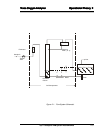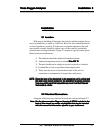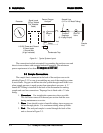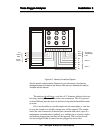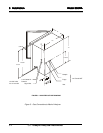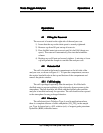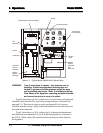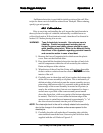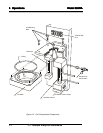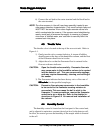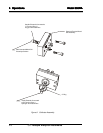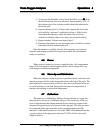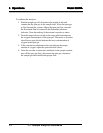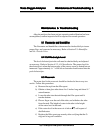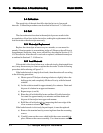
4-3
TT
TT
T
race Oxygrace Oxyg
race Oxygrace Oxyg
race Oxyg
en Analen Anal
en Analen Anal
en Anal
yzyz
yzyz
yz
erer
erer
er
Operations 4Operations 4
Operations 4Operations 4
Operations 4
Teledyne Analytical Instruments
Sufficient electrolyte is provided for initial servicing of the cell. Elec-
trolyte for future service should be ordered from Teledyne. When ordering,
specify type and quantity.
4.2.34.2.3
4.2.34.2.3
4.2.3
Cell InstallationCell Installation
Cell InstallationCell Installation
Cell Installation
Prior to servicing and installing the cell, inspect the lead electrode in
the acrylic base for signs of oxidation, indicated by a reddish-brown or
yellow discoloration. If discoloration is noted, clean the cell as directed in
section 5.5.2 before placing it in service.
WARNING: Type A electrolyte is caustic. Use extreme care in
handling. Protective equipment including but not
limited to gloves and safety glasses should be worn
while handling electrolyte. Refer to the Material Safety
Data Sheet in the Appendix regarding potential hazards
and corrective action in case of accident.
1) Remove the four cell mounting bolts which secure the plastic
cover. Pour out the distilled water.
2) Pour about half the furnished electrolyte into the cell and slosh
until all components within the cell are wetted by the solution.
Drain and dispose of the solution.
3) Wipe the top of the cell and the O-ring with a clean, disposable
tissue to remove solution from the exterior.
DO NOTDO NOT
DO NOTDO NOT
DO NOT touch the
interior of the cell.
4) Carefully pour in electrolyte until it just touches the bottom edge
of the silver screen assembly at all points. This is indicated by a
definite wicking of electrolyte onto the screen assembly at every
point along ithe bottom edge. It is essential at this point that the
bottom edge of the screen assembly be wetted at all points (as
seen by the wicking action), but not over-immersed (as large a
surface area as possible of the screen assembly must remain
above the electrolyte, while every point of the bottom edge must
be wetted). The level is correct when the bottom edge of the
sensor screen is wetted but not immersed; approximately
3
/32 "of
the silver electrode extends into the pool of eelectrolyte.
NOTE: The electrolyte level in the cell is critically related to its sensitivity
due to the change in the cathode surface area exposed to the
eledctrolyte.
5) Carefully place the cell under the cell mounting plate with the
outer terminal toward the front. Secure in place with four bolts
supplied with the cell. Refer to Figure 4-2.



